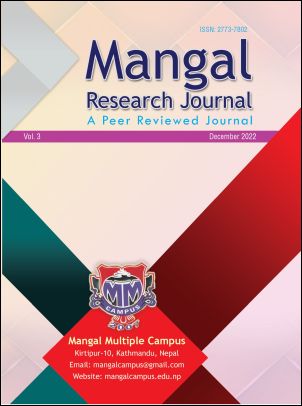Inequality in Institutional Delivery of Recent Birth among Married Women in Nepal: A Trend Analysis
DOI:
https://doi.org/10.3126/mrj.v3i1.51656Keywords:
inequality, institutional delivery, Nepal, recent birth, trend analysis, womenAbstract
The huge discrepancy in health statistics between developed and developing countries occur in the area of maternal mortality, with developing countries contributing most of the figures. This study assesses the trend of institutional delivery of recent birth and compares the inequalities with associated factors that affect institutional delivery in Nepal. The data for this study were obtained from three sequential Nepal Demographic and Health Surveys [NDHS] of 2006, 2011, and 2016. The association between institutional delivery and the explanatory variables was assessed via bivariate analysis (Chi-square test) and multivariate analysis (binary logistic regression). The utilization of health service during delivery stepped up from 21% in 2006 to 62% in 2016. Although the proportion of delivery in health facility increased among poorest over the period of 10 years, the disparity between richest and poorest still persisted from 2006 to 2016 and the association was highly significant in all the surveys. Although government of Nepal has launched the maternity incentive scheme through safe delivery incentive program in 2005, poor women are still deprived from utilizing the service. Poorest and poorer women were 78 per cent (aOR=0.22, 95% CI 0.17-0.27) and 71 Per cent (aOR=0.23, 95%CI 0.23-0.35) respectively less likely to have institutional delivery than the richest women after controlling the other socio-demographic and culture factors. Furthermore, this study has found that education, place of residence, women’s autonomy, religion, number of ANC visits, exposure to newspaper and TV were significant predicators for place of delivery. Although there has been three-fold increment in utilization of health services during delivery over the period of 10 years, the discrepancy between rich and poor, educated and uneducated and urban and rural area is highly evident. Overall, the present study highlights the necessity of interventions to promote institutional delivery with greater focus on poor, uneducated, and rural women




